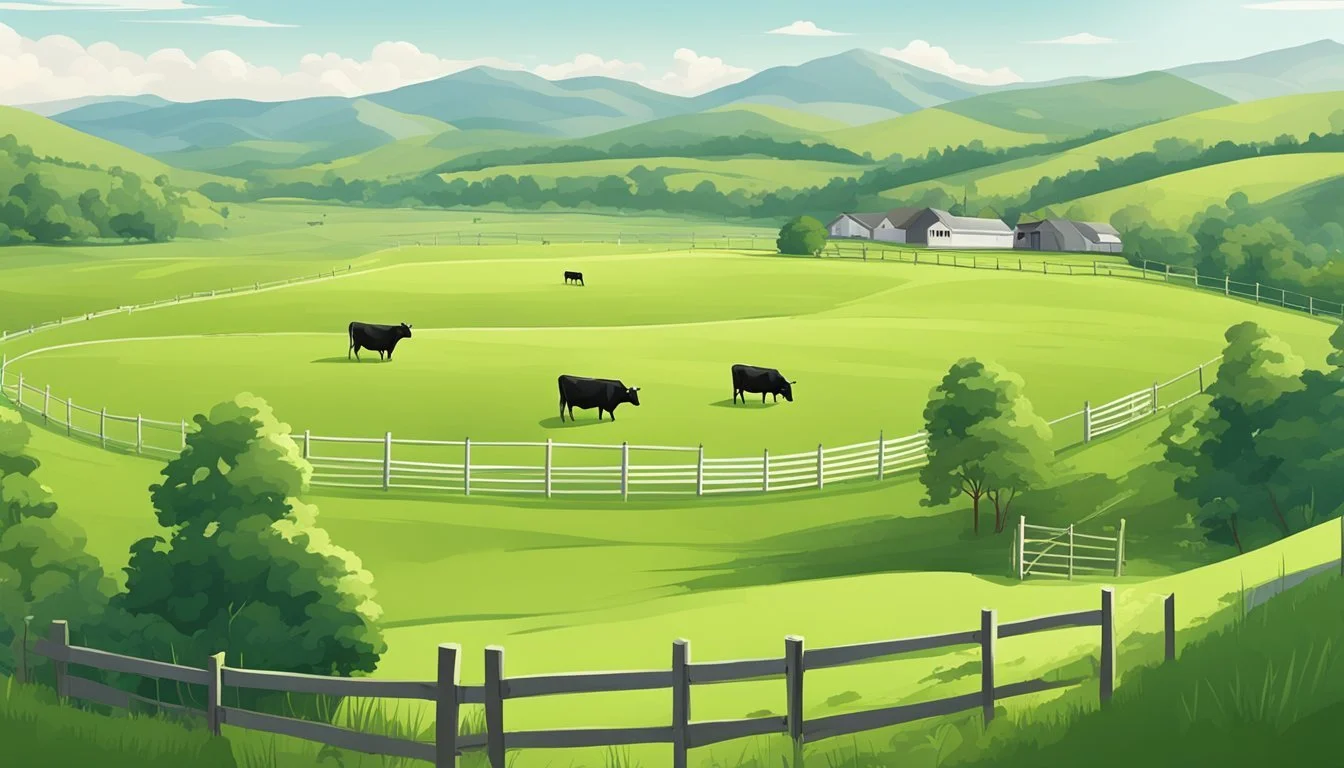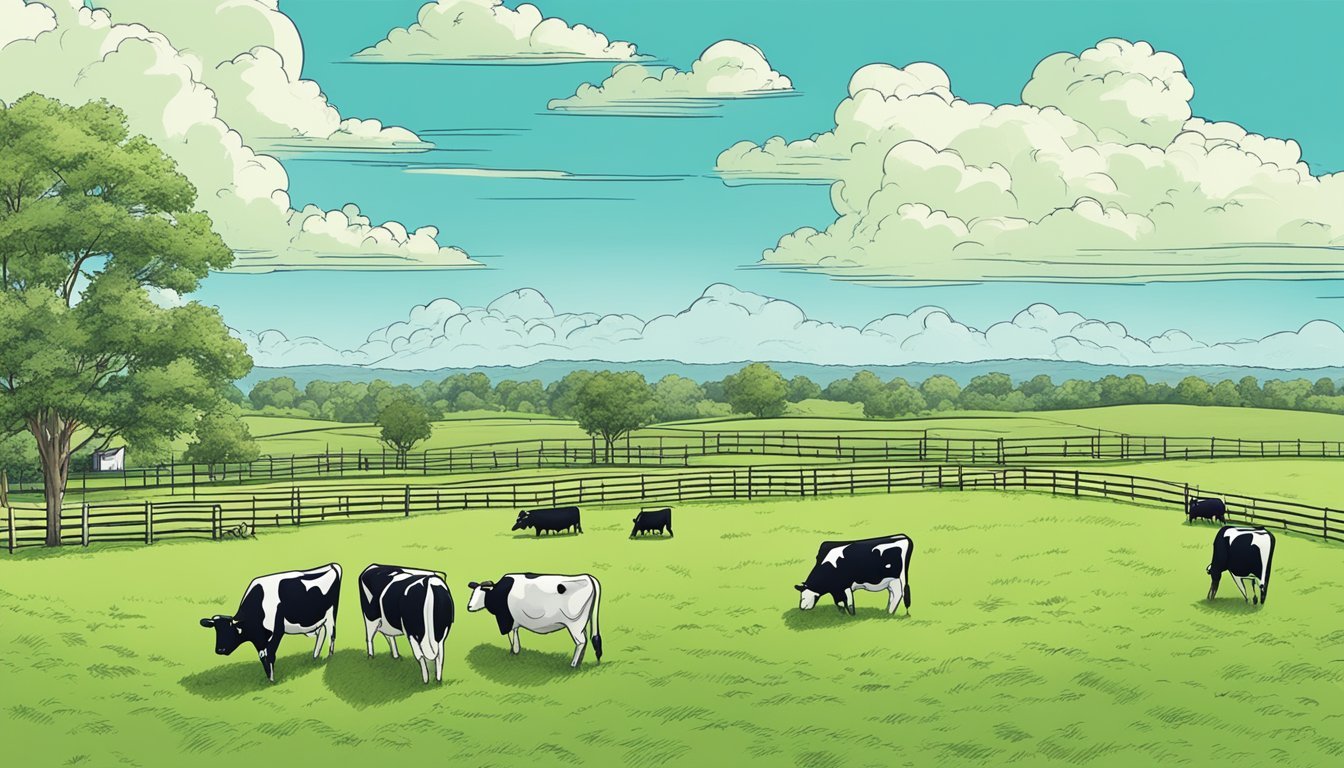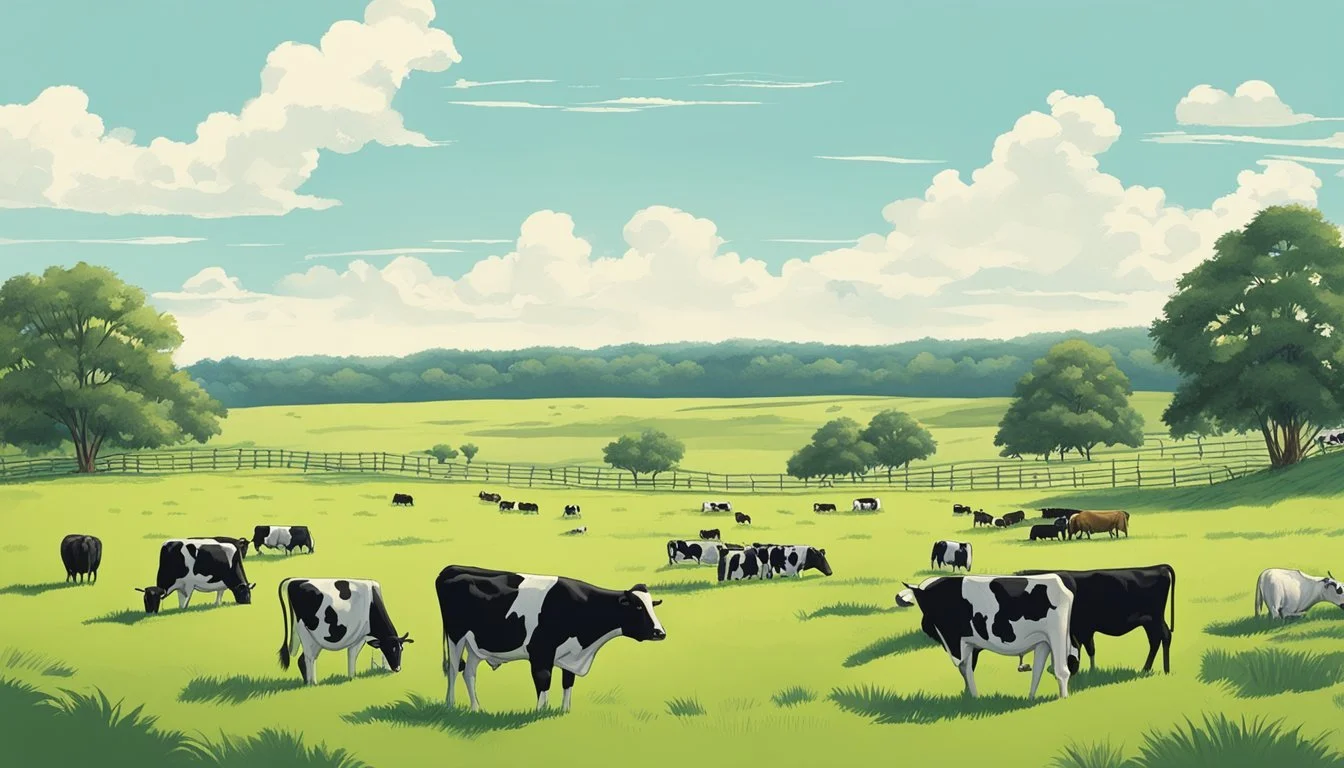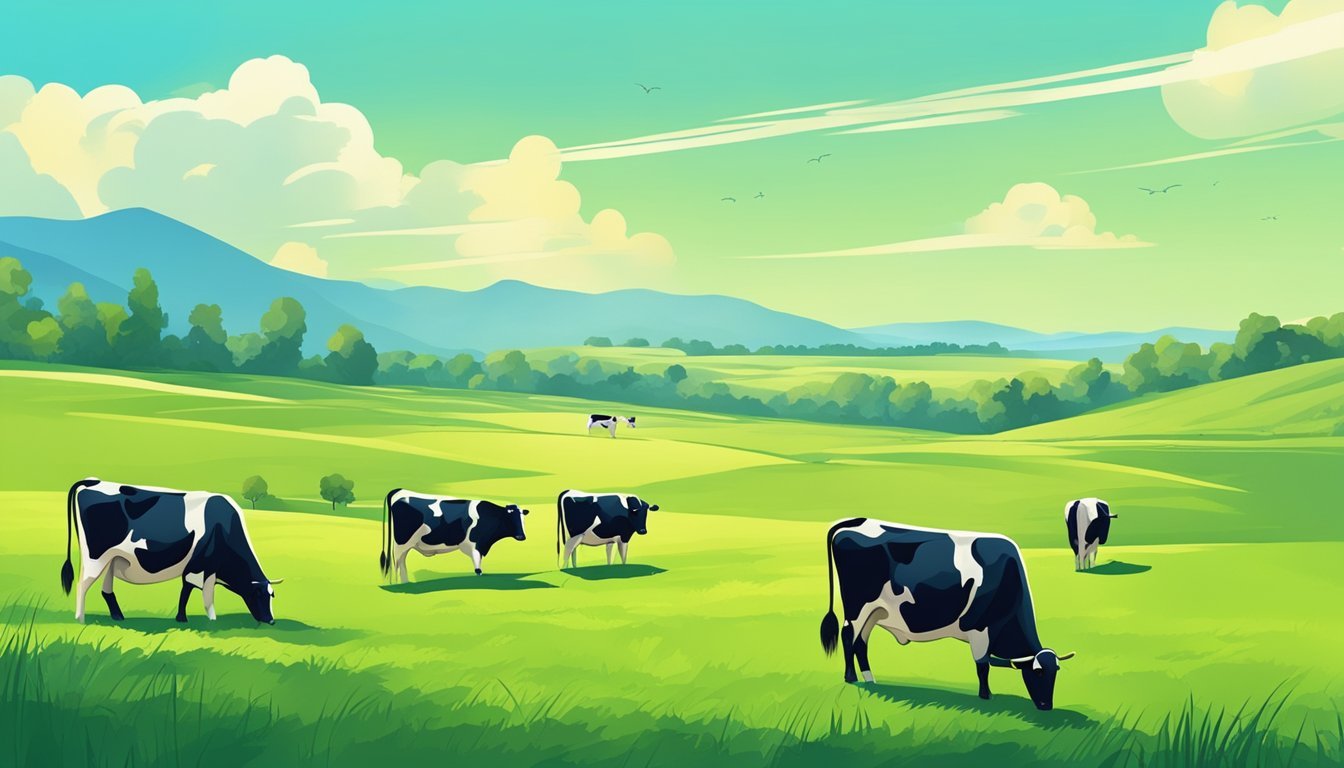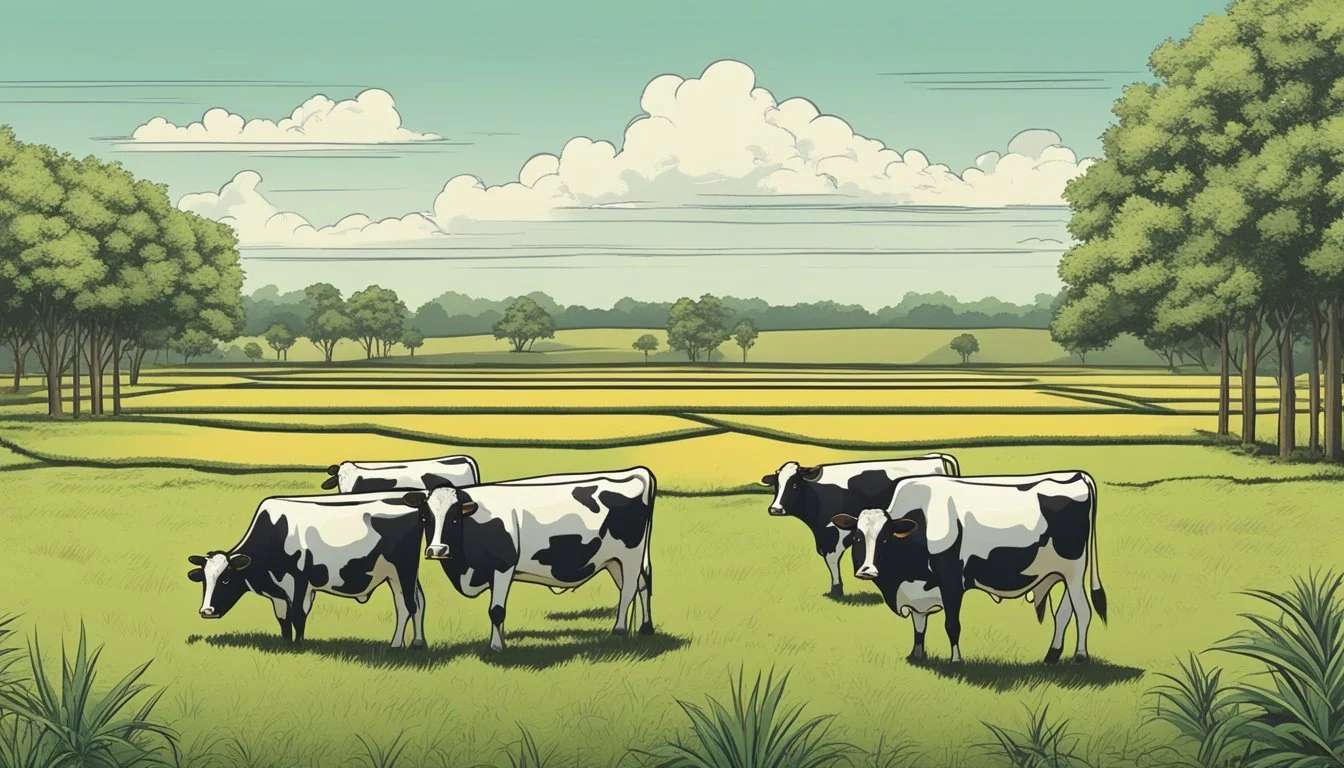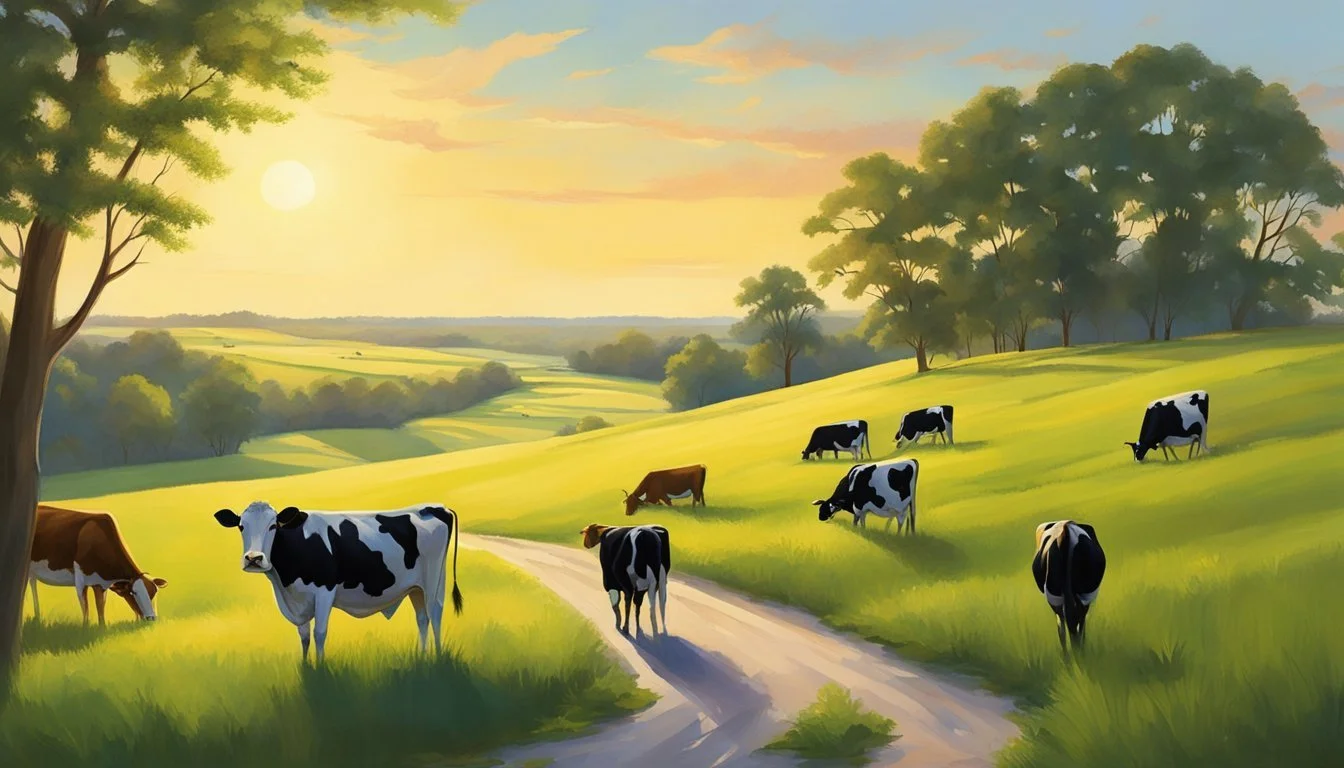Stocking Rate Louisiana
Optimal Cows Per Acre for Property Sustainability
Determining the appropriate stocking rate is essential for the sustainability of pastures in Louisiana. Landowners often ask how many cows their property can support. The stocking rate in Louisiana varies due to a combination of factors such as pasture quality, forage availability, and the nutritional needs of the cattle. Typically, good management practices are critical to maintain a balance between forage production and the grazing pressure exerted by the cattle.
In Louisiana's diverse climate and ecosystems, from marshes to upland forests, the stocking rate can be particularly dynamic. Adjustments may be necessary to accommodate seasonal changes in forage growth and varying weather patterns. Stocking rates should be calculated with the goal of optimizing forage utilization without degrading the health and productivity of the pasture.
It is crucial that owners of grazing lands recognize the importance of a carefully calculated stocking rate, as it directly impacts both the health of their cattle and the condition of their land. In Louisiana, where conditions can change rapidly, having a flexible approach to managing cattle per acre can help ensure the long-term productivity and sustainability of the property’s grazing resources.
Understanding Stocking Rates
Stocking rates determine how many animals a land area can sustain without degradation. This concept is critical for maintaining pasture health and productivity.
Stocking Rate Fundamentals
Stocking rate is a measure of the number of livestock that can be supported per acre of land. An optimally determined stocking rate helps prevent overgrazing, maintain animal health, and maximize forage utilization. In Louisiana, factors such as forage type, growth rate, and climate conditions significantly influence the appropriate stocking rate.
Determining Animal Units (AU)
An Animal Unit (AU) represents the standardized measure of one 1,000-pound cow with or without a calf up to 6 months old. The Animal Unit concept provides a baseline for comparing the forage demand of different types and classes of livestock. For example, landlords in Louisiana must calculate the number of AUs their land can support based on available forage and the need for sustainable pasture management.
Animal Unit Equivalent (AUE) for Different Livestock
Animal Unit Equivalent (AUE) is used to compare different types of livestock in terms of their forage demand relative to a 1,000-pound cow with a calf. For instance, one might say that a horse or a bison has a higher AUE than a cow due to different forage requirements.
Table: Typical AUEs for Various Livestock Types
Livestock Type AUE Beef Cow (1,000 lbs) 1.0 AU Dairy Cow 1.4 AU Sheep or Goat 0.2 AU Horse 1.5 AU
Animals with higher AUE consume more forage and therefore affect the stocking rate calculation. Livestock producers must adjust their stocking rates based on the specific AUEs of the animals they are managing.
Forage and Land Management
In Louisiana, determining how many cows per acre a property can support hinges on effective forage and land management strategies. A tailored approach to each aspect—from assessing forage production to implementing advanced grazing techniques—is crucial for optimizing pasture utilization and sustaining a healthy cattle operation.
Assessing Forage Production
Forage production is paramount in establishing stocking rates. On Louisiana pastures, forage yield should be quantified in tons per acre to match the forage demand of the herd. Utilizing local extension services can provide reliable estimates for various forages common to the region.
Pasture Inventory and Quality
It is essential to conduct a pasture inventory to determine the acreage available for grazing and the quality of the forage. Identifying high-yielding species and culling invasive or unpalatable plants will directly influence the health and productivity of the livestock.
Soil Health and Fertility
Soil health underpins forage quality and quantity. Regular soil tests should be conducted to assess fertility levels. Amendments should be applied according to soil test results, focusing on optimal pH levels and balanced nutrient availability for robust forage growth.
Grazing Management Techniques
Grazing management is crucial for pasture longevity and forage availability. Techniques may include controlled stocking to prevent overgrazing and ensuring that forage plants have adequate recovery time, which in turn, supports sustained forage production.
Rotational Grazing and Paddock Design
Implementing rotational grazing within a paddock design boosts forage utilization and animal performance by consistently moving cattle to fresh paddocks with ample forage. This method reduces forage selectivity, improves pasture recovery, and can enhance soil fertility through more uniform manure distribution.
Calculating Carrying Capacity
Calculating carrying capacity is a crucial step in determining the appropriate stocking rates for a property in Louisiana. This process ensures that the land can sustain a certain number of cattle without degradation of pasture conditions.
Factors Affecting Carrying Capacity
Several factors must be considered when calculating the carrying capacity of a property. The primary goal is to balance livestock numbers with the available forage resources to maintain a sustainable ecosystem. Important factors include:
Pasture Quality: The nutritional value and quantity of the forage available.
Soil Fertility: Influences the growth rate and nutritional content of the forage.
Climate: Seasonal variations and rainfall patterns affect forage production.
Topography: Landform and drainage can impact the distribution and utilization of forage.
A table to demonstrate how these factors interact might look like this:
Factor Influence on Carrying Capacity Pasture Quality High-quality forage supports higher stocking rates. Soil Fertility More fertile soil can enhance forage production. Climate Adequate rainfall increases forage availability. Topography Suitable topography allows better forage access and utilization.
Sustainable Stocking Strategies
To achieve a sustainable stocking rate that aligns with the property's carrying capacity, one should adopt certain strategies. These strategies involve careful planning and regular assessment, including:
Regular Monitoring: Observing pasture conditions and making adjustments accordingly.
Rotational Grazing: Implementing a system that allows pastures time to recover.
Supplemental Feeding: Providing additional nutrition during periods of low forage availability.
In summary, the sustainability of stocking rates is directly linked to careful monitoring and adaptation to changing pasture conditions. Proactive management ensures that the property supports the maximum number of cattle without compromising ecological balance.
Environmental Considerations
Supporting cows per acre in Louisiana requires a careful consideration of environmental factors. This section discusses how weather and seasonal variability, soil conditions, and the preservation of biodiversity impact stocking rates.
Dealing with Weather and Seasonal Variability
Louisiana's climate is characterized by high precipitation and a considerable range of temperature fluctuations, which can affect forage availability and grazing patterns. Stocking rates must account for the wet season, where excessive mud can lead to trampling of plants, reducing forage quality and quantity. During drier periods, forage production might decrease, requiring adjustments to the number of cows per acre to prevent overgrazing.
Mitigating Soil Compaction and Erosion
The health of the soil is vital for sustainable grazing. Soil compaction, often caused by the hooves of livestock, can reduce water infiltration, aeration, and root growth. An effective approach includes:
Rotational grazing to prevent over-use of a single area.
Rest periods for pastures to recover and maintain soil structure.
Limiting access to vulnerable areas during wet conditions to minimize erosion and compaction.
Biodiversity and Plant Species Diversity
Maintaining a variety of plant species within pastures is essential for a stable and productive ecosystem. Biodiversity supports not only the dietary needs of cows but also contributes to the resilience of the grazing land. Strategies to encourage plant diversity include:
Introducing a mix of plant species suited to the local climate and soil types.
Utilizing grazing practices that promote the growth of various forage species.
Monitoring plant health regularly and adapting grazing strategies to protect sensitive species from being outcompeted.
Nutritional Aspects of Forage
In determining the capacity of Louisiana pastures to support cattle, the nutritional value of forage and the management of supplemental feeding are critical. Forage quality directly influences cattle health and pasture productivity.
Understanding Forage Nutritional Value
The nutritional value of forage crops such as rye, other grasses, and legumes like clover, is primarily determined by their protein and fiber content, which are crucial for the animal's growth and energy. Forage yield and quality are affected by the presence of weeds and the application of nitrogen-rich fertilizers. An ideal forage has a high ratio of nutrients, including nitrogen, phosphorus, and other minerals that contribute to the dietary needs of the cattle. To measure the adequacy of forage nutrients, producers often refer to the Dry Matter (DM) content and its associated nutrient levels. A key metric used in pasture management is the Animal Unit Month (AUM), which estimates the amount of forage required by an animal unit to graze for one month.
Forages like rye grass and clover are valued for their high protein content, which is essential during the grazing season to maintain cattle weight and health. The nutritional content of forage is contingent on proper soil fertility, which requires adequate levels of nitrogen and phosphorus. When forage nutritional value meets cattle requirements, livestock can maximize grazing, reducing the need for supplemental feed.
Supplemental Feeding and Nutrient Management
When forage alone does not meet the nutritional needs of cattle, supplemental feed becomes necessary to fill the dietary gaps. This is particularly important outside of the prime grazing season or when forage yield is affected by external factors such as weather conditions. Supplemental feeds can range from hay to commercial feeds rich in protein, energy, or other nutrients deficient in the forage at hand.
Effective nutrient management involves regular soil testing to determine the levels of crucial nutrients and adjusting fertilizer application accordingly to maximize forage yield and quality. Incorporating legumes like clover into grazing systems can naturally augment nitrogen levels in the soil, enhancing the nutritional quality of grasses and reducing reliance on commercial fertilizers. Ensuring a balance between forage intake and supplemental feed is vital for maintaining cattle health and optimizing the stocking rate of pastures in Louisiana.
Livestock Health and Welfare
The health and welfare of livestock on any property are directly influenced by the management decisions, particularly those related to stocking density. Proper stocking rates are crucial to avoid detrimental effects on animals that can arise from overgrazing and undergrazing.
Impact of Stocking Density on Animal Health
Stocking Density refers to the number of animals per unit area of land. In Louisiana, maintaining an appropriate stocking density is essential for the well-being of cattle, sheep, and goats.
Overcrowding: High stocking densities can lead to overgrazing, where animals deplete the forage faster than it can regrow. This can cause nutritional deficiencies, stress, increased vulnerability to diseases, reduced growth rates, and lower reproductive performance.
Understocking: Conversely, low stocking densities might lead to undergrazing where pastures become too mature and less palatable, which can also affect the nutritional intake.
It's vital to assess the specific needs of cattle, sheep, and goats, as each may have different requirements and impacts on the pasture.
Preventing Overgrazing and Undergrazing
Preventive measures are key in aiding to maintain the balance between pasture availability and livestock demands.
Rotational Grazing: Implementing a rotational grazing system can allow pastures time to recover, reducing the risk of overgrazing.
Monitoring: Regularly monitoring pasture conditions and livestock health can promptly identify issues related to overgrazing or undergrazing.
Adjustments: Be prepared to adjust the number of livestock to match the carrying capacity of the land, which can vary annually due to changes in climate conditions.
Through these practices, producers can help ensure a sustainable environment that supports both pasture health and livestock well-being.
Economic Aspects
In Louisiana, the economic viability of cow-calf operations hinges on effective stocking rates and pasture management strategies. These are critical for balancing costs and maximizing returns.
Costs Associated with Grazing Infrastructure
In Louisiana, the initial and ongoing costs for grazing infrastructure are pivotal in determining the overall profitability of a cow-calf operation. For instance, rotational stocking systems may require significant upfront investment in fencing, water systems, and handling facilities. Investors must account for these expenses:
Fencing: Costs vary based on materials and total acres enclosed.
Watering Systems: Essential for rotational grazing, prices escalate with complexity and pasture acreage.
Pasture Maintenance: Includes seeding, fertilization, and weed control to maintain a moderate stocking rate that promotes forage growth and supports livestock health.
These costs must be evaluated against the potential for increased livestock productivity per acre to ensure financial sustainability.
Maximizing Economic Returns with Optimal Stocking
Profitability in cow-calf operations is directly linked to implementing an optimal stocking rate. Research from Louisiana has indicated various stocking rates, such as 0.5 cows per acre representing a low rate and 1.1 cows per acre being high. The chosen stocking rate impacts:
Forage Availability: Higher stocking rates can lead to overgrazing and reduced pasture productivity, measured in lb/acre.
Weight Gain Per Cow: Overstocked conditions can decrease the rate of weight gain per animal, affecting market readiness and prices.
A moderate stocking rate is often recommended to balance forage use with animal performance, with variations arising from the specific conditions of each property and the goals of the operation. Pasture management through methods like rotational grazing can enhance forage utilization and support a larger number of cattle per acre without sacrificing animal or pasture health.
Planning and Record Keeping
When managing a property in Louisiana for livestock, precise planning and thorough record-keeping are critical elements that influence the number of cows the acreage can support. Effective pasture management hinges on understanding and documenting animal units and utilization rates.
Importance of Accurate Records
Accurate records are the backbone of informed pasture management. They enable producers to track the number of animal units (AUs) over time, which helps in assessing pasture utilization and overall herd health. For instance, if a property typically sustains 5 AUs per acre with a 60% utilization rate, any deviation recorded can signal a need for management changes. Records should include:
Animal Inventory: Number and type of cattle on the property.
Forage Growth: Documentation of forage availability throughout the year.
Utilization Rates: How much forage cattle are consuming versus what's available.
This data is vital for creating a comprehensive Table of Utilization that reflects the intricate balance between livestock needs and pasture resources.
Using Research and Data to Inform Decisions
Employing research and field data to guide decision-making ensures that stocking rates are based on proven practices rather than guesswork. Utilizing Figure 1, a model of expected forage growth vs. consumption, helps to predict the carrying capacity of the acreage. For Louisiana, climate and seasonal forage production data are pertinent in calculating accurate stocking rates. The steps include:
Assess the average weight of a cow to determine its AU rating.
Measure available forage in pounds and document through seasons.
Apply local research data on ideal utilization rates for sustainability.
By synthesizing research with up-to-date records, farmers can make confident decisions about stocking rates that optimize their resources while ensuring the health of their pasture and cattle.
Conclusions
In determining the optimal stocking rate for Louisiana properties, cattle producers must consider carrying capacity, which hinges on pasture inventory and utilization. It's crucial to implement sustainable management practices, ensuring that grazing balances with forage availability, preventing overgrazing and land degradation.
Producers should conduct regular assessments of their pastures, factoring in grass species, growth patterns, and the forage needs of their cattle. It is indispensable to adapt the stocking rate to seasonal changes and weather events, which can affect forage quantity and quality.
Louisiana's climate allows for a higher stocking rate compared to more arid regions; however, individual property features such as soil fertility, forage type, and water availability play pivotal roles. On average, an appropriately managed pasture in Louisiana can usually support more cows per acre than in less fertile regions.
Here is a brief illustration of key considerations:
Carrying Capacity: Defined by the maximum number of animals that can graze without harming the pasture.
Pasture Inventory: Regular surveys of forage types and availability.
Utilization Rate: Target the percentage of forage animals can consume without overgrazing, typically between 25% to 50%.
Sustainable Management: Practices that maintain soil health, forage quality, and livestock productivity.
A sustainable stocking rate is not a fixed figure but a dynamic goal. Careful pasture management and a willingness to adjust stocking rates as conditions change are essential for long-term success in cattle ranching.

